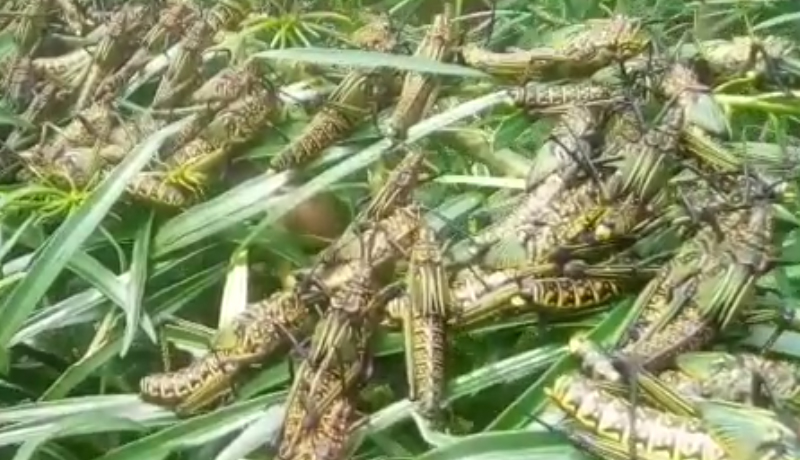A video showing swarms of locusts lying on trees has been aired on social media. The video producers made people believe that migratory locusts that are destroying crops in some East African countries namely Kenya, South Sudan and Ethiopia appeared in Gakungwe area in Kabezi commune of Bujumbura province in the southwest of Burundi.

Locusts species observed in Kabezi commune not harmful
At a press conference held on 10 February, Jean Claude Mbarushimana, Director of Agriculture at the Ministry of the Environment, Agriculture and Livestock denied this information.
“The locusts that appeared in Kabezi are usual in Imbo plain and have nothing to do with the migratory locusts ravaging crops in some East African countries,” reassures the Director of Agriculture.
He explains that after having the information, the Ministry sent to Kabezi, a team made up of technicians responsible for plant protection and researchers from the Institute of Agronomic Sciences of Burundi in collaboration with the staff of the provincial office of the ‘Environment, Agriculture and Livestock to verify this information.
According to Mbarushimana, these technicians found locusts lying on trees. “These locusts are not harmful because they live naturally on trees and rarely in crop fields,” says Mbarushimana, who indicates that to fight against these locusts, people have to pick and throw them in a hole or rather burn them.
The locusts species observed in Kabezi Commune are called “Zonocerus variegatus”. It is a stinky species of yellow color mixed with green, red and black. “It is forbidden to eat this species of locusts,” says Mbarushimana. He calls on people to be wary of false information that can distract farmers. “We continue to advise farmers and provide them with the information in order to increase agricultural production,” he promises.



















 IWACU Open Data
IWACU Open Data

